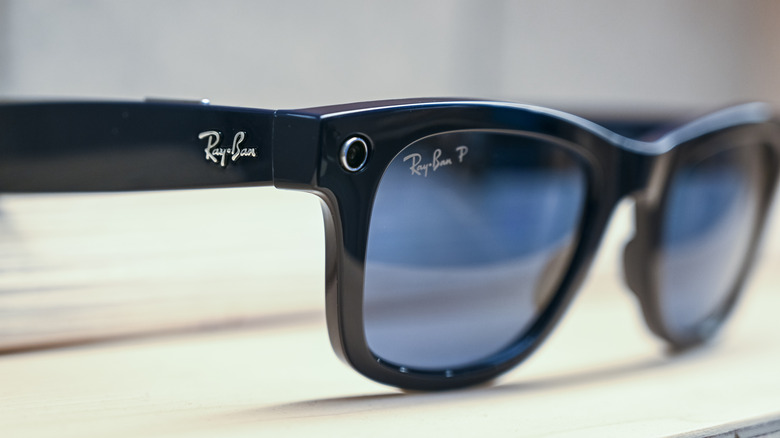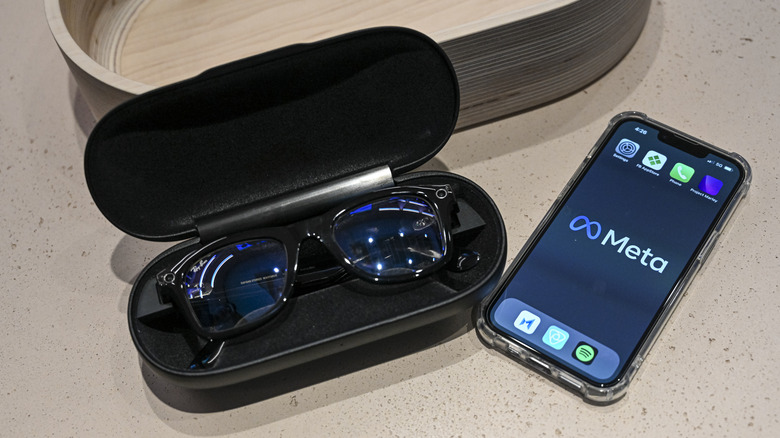Ray-Ban Stories Update Finally Turns Them Into Smart Glasses
Smart glasses have been struggling to be seen as anything more than a quirky novelty since the troubled launch of Google Glass in 2013. Without a killer app or features that make it both distinguishable from a smartphone and just as irreplaceable as one, the jury is still out on whether the wearable tech will finally go mainstream and become commercially successful. With companies like Apple and Meta still investing in mixed reality, smart glasses still very much have a chance to become the next big gadget.
While Meta's virtual reality headset, the Quest, has made headway in the VR market, its brand of smart glasses, Ray-Ban Stories, hasn't been quite as attention-grabbing. By collaborating with the popular sunglasses and eyeglasses brand, Meta's Ray-Ban Stories at least look stylish, especially when compared to Google Glass and other older attempts at the technology; three options for frames and several color choices are currently available for first-generation Stories.
While Meta is continually updating the software to fine-tune them and make them more useful, the feature set for the smart glasses is still fairly limited. A pair of Ray-Ban Stories currently comes with dual 5-megapixel cameras that can capture photos and videos with a voice command or tap of a button. It also includes open-ear audio and uses the "Hey Facebook" smart assistant for basic controls to help you operate the glasses and use them for communication and social media (Meta owns Facebook, Instagram, and WhatsApp.) The glasses can be charged in a compact case. However, it's the latest update, announced on May 23, that may finally put the "smart" in "smart glasses" for Meta's product.
Ray-Ban Stories' latest update detailed
Meta announced a handful of new changes in the latest update for Ray-Ban Stories, including expanding current features to a larger number of users. That includes Spotify Tap, which previously only allowed iOS users to stream music from their Spotify account with a single tap, being extended to Android users as well. Additionally, French and Italian-language users of WhatsApp will now have hands-free messaging and calling capabilities, as well as having their WhatsApp communications encrypted, just as English-language users have previously enjoyed.
The biggest change with this update, however, is the enhancement of voice control, which is important for the hands-free device to become a more useful peripheral. Ray-Ban Stories will now allow all wearers to use their voice to reply directly to messages, create new ones, and answer calls or ignore them and send them straight to voicemail. These voice controls will also be more intuitive and conversational with the new update. Meta uses the examples "Ask Martha if she wants to come to the party" and "Tell David I love him" to showcase how Stories can send messages for you rather than needing more direct phrasing like "Send a message." These more-seamless voice commands will be available for calls, texts, Facebook Messenger, and WhatsApp.
Meta also announced, beginning in June, that it will be requiring Meta accounts to use Ray-Ban Stories and its Facebook View companion app. Previously, a Facebook account was needed. If you don't already have one from using products like Quest, a Meta account can be created with email or with your preexisting Facebook or Instagram login. Through your Meta account, you'll be able to link your Facebook or Instagram to your Ray-Ban Stories, which Meta hopes you'll use to share the content you're capturing hands-free with your eyes and voice.

